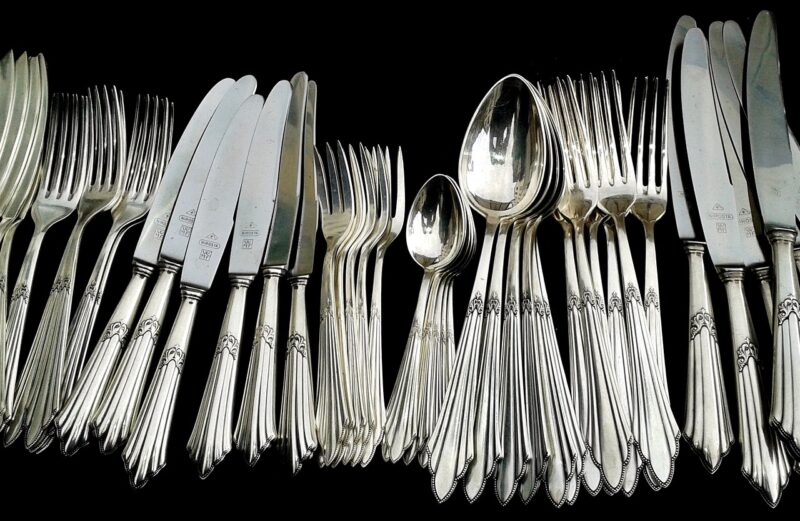Silver in Ancient Civilizations: How Different Cultures Valued This Shiny Metal
November 14, 2024

Silver, often referred to as the ‘liquid metal,’ has been highly sought after by various civilizations throughout history. Its lustrous finish and malleability made it an ideal material not just for crafting beautiful jewelry and decorative artifacts, but also for economic transactions and symbolic expressions of status and wealth. In this article, we explore how different ancient cultures valued silver, the uses they derived from it, and its significance in trade and society.
1. The Historical Significance of Silver
Silver has a rich history that dates back millennia, playing intrinsic roles in many ancient civilizations, including those of Mesopotamia, Egypt, China, and the Americas. Its value has fluctuated across cultures and eras, yet it maintained a reputation as a sign of wealth and status.
- Mesopotamia: Silver was used extensively in ancient Mesopotamian cultures, particularly in economic transactions. The Sumerians utilized silver in trade as a standardized form of currency. In fact, it was often weighed and measured as a commodity, facilitating commerce and trade.
- Ancient Egypt: In Egypt, silver was rare and highly coveted, often associated with the moon. The Egyptians utilized silver in jewelry and decorative items, adorning tombs to accompany the deceased in the afterlife. The famous tomb of Tutankhamun contained numerous silver objects, showcasing its significance.
- Classical Rome: The Romans valued silver not only for its beauty but also for its practical uses. Silver coinage, such as the denarius, played an essential role in Roman economy and trade, becoming a symbol of wealth. The craftsmanship of silverware also flourished during this time, with pieces often engraved with intricate designs.
- China: In ancient China, silver was used as a form of currency during the Han Dynasty, valued for both its beauty and its practical application in trade. The Chinese also produced exquisite silver filigree work, often used in jewelry and intricate rituals.
Thus, it is evident that silver was much more than just a metal in ancient cultures; it was an integral part of their economy and social structure.
2. Silver in Religious and Cultural Contexts
Throughout history, silver has also held religious and cultural significance. Its reflective qualities and bright sheen led to its association with divine attributes in many religions.
- Judaism: In Jewish traditions, silver is mentioned frequently in the scriptures, often symbolizing purity and redemption. The practice of using silver for ceremonial objects, such as the kiddush cup, underscores its sacred nature.
- Hinduism: Silver is also revered in Hindu culture, often used in religious rituals. Items made of silver are thought to enhance prosperity and protect against evil spirits, leading to the crafting of idol ornaments and ceremonial vessels.
- For the Aztecs: In Mesoamerican civilization, particularly the Aztecs, silver was held in great esteem, considered a gift from the gods and used in rituals and offerings. They created stunning silver artifacts that showcased their skills and artistry.
Silver’s association with divinity and wealth has persisted throughout history, marking its importance in spiritual practices.
3. Economic Impact of Silver Trade
The demand for silver had a significant influence on trade and economy across the ancient world. As civilizations expanded, so did the trade routes, and silver often served as the currency that enabled these exchanges.
- The Silk Road: The famous trade route connecting East and West showcased silver’s role as a vital commodity. Merchants traded silk and spices in exchange for silver, facilitating cross-cultural interactions and economic growth.
- Mining Techniques: The search for silver led to significant advancements in mining techniques. Ancient civilizations developed sophisticated methods to extract silver from ores. The Romans, for instance, constructed aqueducts to transport water needed for mining operations.
- Colonial Impact: With the arrival of Europeans in the Americas, silver mining took a new turn. Spanish explorers uncovered vast deposits of silver in places such as Potosí in present-day Bolivia, which significantly impacted global trade in the 16th and 17th centuries.
The economic ramifications of silver trading influenced political landscapes, dynasties, and the rise and fall of empires.
4. Artistic Expressions with Silver
Artisans in ancient civilizations exhibited exceptional craftsmanship through the use of silver. The versatility of the metal allowed for various artistic expressions, from intricate jewelry to functional objects.
- Jewelry Making: In many cultures, silver was intricately fashioned into ornaments, serving not just as adornment but as symbols of status and identity. Ancient Greeks, for instance, crafted silver diadems and brooches, showcasing their artistry and cultural significance.
- Tableware and Utensils: Silver was also used to create beautiful utensils and tableware, especially among the elite. These objects often featured elaborate engravings and designs that told stories of religion, mythology, and daily life.
- Coins and Medallions: The importance of silver in economies led to the minting of coins adorned with artistic representations of rulers or deities, reflecting the culture and values of the society.
This artistic evolution showcases how silver transcended mere utility to become an essential part of cultural identity.
5. Legacy of Silver in Contemporary Society
Today, silver remains an essential metal, not only for its aesthetic appeal but also for practical applications in technology and industry. While its uses have evolved, its legacy as a symbol of wealth and artistry endures.
- Modern Economics: Silver is still traded as a valuable commodity in stock markets and is sought after for investment purposes. Its role in the global economy continues to be significant.
- Technological Applications: Advances in technology have introduced new uses for silver, including its role in electronics, solar panels, and medical applications, such as antibacterial coatings.
- Cultural Significance: Silver jewelry and decorative items remain highly fashionable today, often passed down as heirlooms, preserving the historical connection between silver and wealth.
The interconnectedness of silver with human civilization illustrates its enduring relevance through thousands of years.
Conclusion
From ancient economies to modern applications, silver has played a pivotal role in shaping cultures and societies. Its multifaceted significance—as a currency, a medium for artistic expression, and a symbol of wealth—has woven silver into the very fabric of civilization. Understanding how different cultures valued this shiny metal not only offers a glimpse into the past but also highlights ongoing innovations and relevance in today’s world as we continue to make use of this remarkable metal.
As we reflect on the ancient civilizations that recognized the importance of silver, we acknowledge its undeniable impact on humanity and culture. The story of silver is not merely about its shimmer; it is a narrative that encompasses trade, art, spirituality, and economic growth—a true testament to the power of this captivating element.







